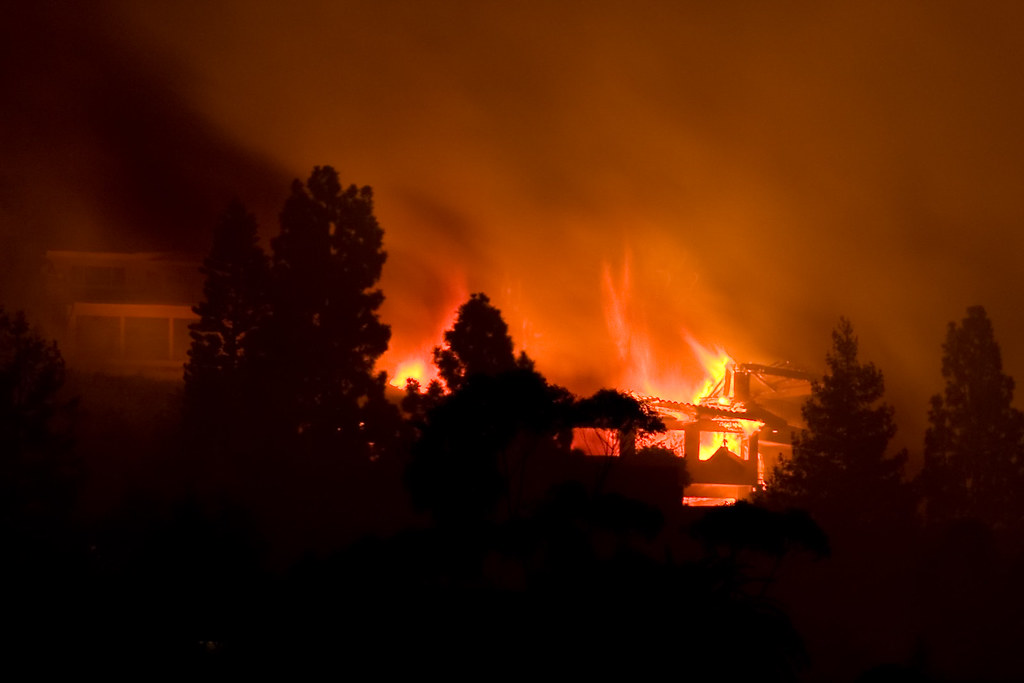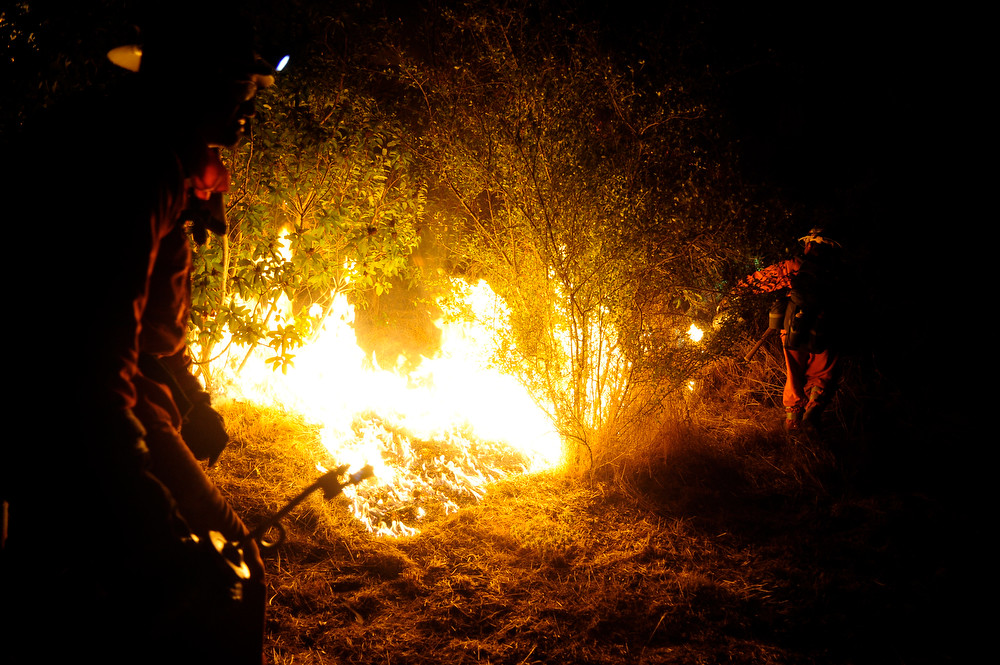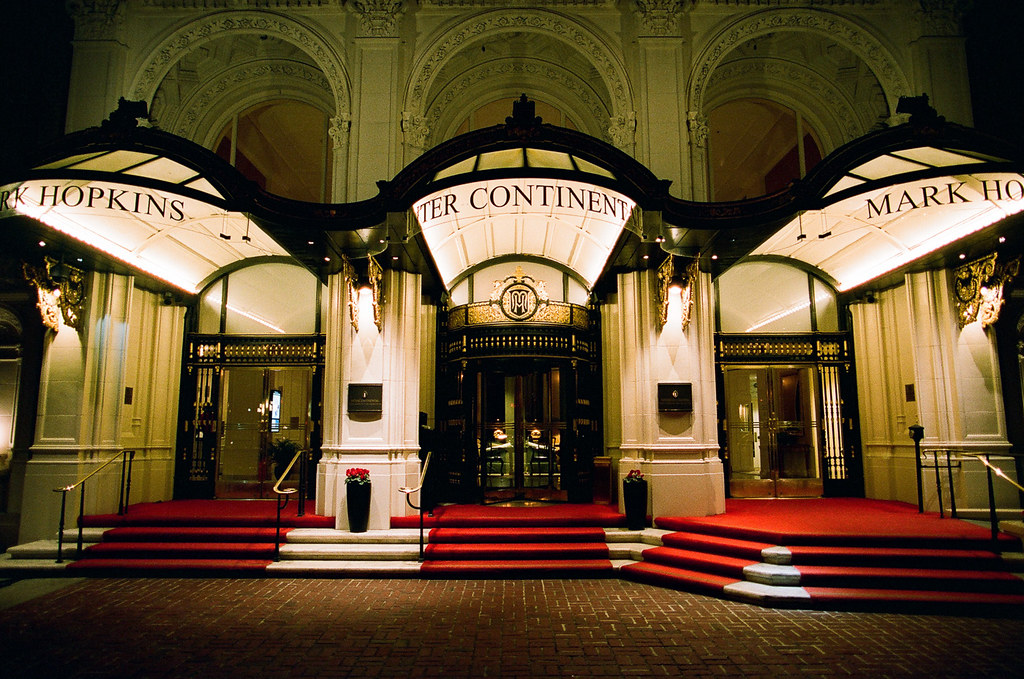 I’m a native
Californian, and I say that with pride. Born in the greater San Francisco Bay
Area, I grew up in a new subdivision where all the houses contained young kids--like
25 kids within the closest 8 houses. My fairly average upbringing consisted of
games of Hide and Seek or Red Rover on the front lawns after dinner, Roller
Derby or playing store in the garage on rainy days, and the men congregating
around any vehicle with a raised hood. Having everyone cheer when the training
wheels came off the bicycle and I wobbled down the middle of the street
bolstered the achievement. But also those houses contained my first secret and
unrequited crushes.
I’m a native
Californian, and I say that with pride. Born in the greater San Francisco Bay
Area, I grew up in a new subdivision where all the houses contained young kids--like
25 kids within the closest 8 houses. My fairly average upbringing consisted of
games of Hide and Seek or Red Rover on the front lawns after dinner, Roller
Derby or playing store in the garage on rainy days, and the men congregating
around any vehicle with a raised hood. Having everyone cheer when the training
wheels came off the bicycle and I wobbled down the middle of the street
bolstered the achievement. But also those houses contained my first secret and
unrequited crushes.
The lure of a big city
never hit, but I did want to get away for college. I attended college in Chico
when the 18,000 students doubled the town’s population. The town became fascinating because places
were named for the people instrumental in establishing them. The creek running
through the middle of campus was beautiful but also served to orient you--it
marked the division between the north and south parts of town and “streets”
were above and “avenues” below. Plus farmlands surrounded the town, and I’d
never had to drive through rice fields and almond orchards before. The seed of
love for historical times developed. (It was first planted as I walked old
graveyards with my dad on family vacations, and he pointed out details about
deaths grouped around a short period of time or short life spans.) I bet my
hometown has an interesting history, too, but I never thought to research it
before I left.
Three times a relocation
has been prompted by my husband’s employment. We made a home in Corvallis,
Oregon, for three years then returned to the house where my husband lived as a
kid and stayed in southern Californian cities for 19 years. Then we moved to San Antonio, Texas, for
twelve years. Since our latest return in 2012, we’ve lived in the San
Bernardino National Forest--first on-site at a year-round church-run camp and
now in a small quasi-rural community. Just over the next is Holcomb Valley, a spot with a history of gold mining that I can’t wait
to research.
My short story, Dipping
in a Toe, was written with Chico in mind, although I gave the town a
different name. But the small town atmosphere was the same that I remembered.
BLURB: Jessa Landers has a secret crush on her teens’ years-younger swim coach.
A widow for three years, she’s managing her life and enjoys her freedom—except
for long, lonely evenings when she craves an attentive man. Coach Rick Grant
loves being a high school teacher and swim coach. Surrounded by families has
him yearning for his own romantic connection—and his eye is on Jessa. Will
Jessa protect the balance of her family life, or take a second chance on love?
One lucky
person who leaves a comment and contact info will win a copy of a backlist
title of his or her choice. Visit my website to browse.
BIO: As a young girl,
Linda was often found lying on her bed reading about fascinating characters
having exciting adventures in places far away and in other time periods. In
later years, she read and then started writing romances and achieved her first
publication--a confession story. Married with 4 adult children and 2
granddaughters, Linda now writes heartwarming contemporary and historical stories
with a touch of humor and a bit of sass from her home in the southern
California mountains.
To stay in touch with
Linda
Website www.lindacarroll-bradd.com
Amazon Author Page https://www.amazon.com/author/lindacarroll-bradd
And Don Simkovich Author
of Tom Stone Sweltering Summer Nights:
Experiencing California’s array of cultures
and languages is like browsing a Sunday brunch buffet with food available for every
taste. Los Angeles is perhaps the most cosmopolitan city in not just the state
but in the world. Hundreds of languages are spoken by families within the
sprawling Los Angeles Unified School District, while enclaves of families
hailing from China, Mexico, Iran, Ethiopia and every other country on the globe
live and work together.
 The Golden
State’s is filled with natural beauty and in the greater LA area, nature
clashes with urban life as coyotes and mule deer roam streets in the foothill
cities just fifteen miles away from downtown Los Angeles. The Angeles National
Forest encompasses Mount Wilson at a full mile above sea level with television
and radio towers visible across the LA basin.
The Golden
State’s is filled with natural beauty and in the greater LA area, nature
clashes with urban life as coyotes and mule deer roam streets in the foothill
cities just fifteen miles away from downtown Los Angeles. The Angeles National
Forest encompasses Mount Wilson at a full mile above sea level with television
and radio towers visible across the LA basin.
Winter snows
that blanket the San Gabriel Mountains provide a refreshing lightness to the
ground that turns from green to brown during the rest of the year.
Los Angeles
and its surrounding towns have pockets of neighborhoods that are like small
towns and these neighborhoods are the setting for the Tom Stone detective
stories: Tom Stone Nitty Gritty Christmas,
Tom Stone Sweltering Summer Nights,
and the soon-to-be-released Tom Stone Day
of the Dead.
A group home
and blue collar neighborhood in Van Nuys to the traffic-laden streets of Boyle
Heights and the upscale docks of Marina del Rey. Crime is no respector of zip
codes and Tom Stone pursues a wanna-be druggie entrepreneur who goes from
dealing cocaine-laced candy bars to opening a marijuana dispensary and fights
against a crime syndicate that’s out to totally own him.
My co-author
Lon and I wanted to capture not just the details of the crime scene but some of
the “nitty gritty” details of the vast numbers of apartments lining the
streets, the hills, and the fog of the docks.
 Greater Los
Angeles is home to plenty of celebrity actors and athletes but there are many
others who live in the grime of the city. For example, the foster care system
in Los Angeles County is enormous and Tom Stone encounters a boy who knows he
has no family and home except for the boys’ group home and his counselor, a
wonderful man named Luke.
Greater Los
Angeles is home to plenty of celebrity actors and athletes but there are many
others who live in the grime of the city. For example, the foster care system
in Los Angeles County is enormous and Tom Stone encounters a boy who knows he
has no family and home except for the boys’ group home and his counselor, a
wonderful man named Luke. Our novels
aren’t a tour of homes in Beverly Hills, but hopefully a realistic and friendly
slice of real life, including a nosy neighbor Mary Anne Bostovich who tries in
vain to get a neighborhood watch going on the street where she and her husband
had moved about 40 years earlier. Her son works for CalTrans.
Our novels
aren’t a tour of homes in Beverly Hills, but hopefully a realistic and friendly
slice of real life, including a nosy neighbor Mary Anne Bostovich who tries in
vain to get a neighborhood watch going on the street where she and her husband
had moved about 40 years earlier. Her son works for CalTrans.
Los Angeles,
like all of California, is rich in languages and cultures and we hope that some
has been captured in the Tom Stone detective stories.
Sweltering
Summer Nights is available on Amazon
or check the website CarvedinStone.media/Tomstonedetectivestories.
Get
introduced to the stories by commenting for a chance to win a digital copy of
Tom Stone Sweltering Summer Nights (Book 2 in the Stone-Angelino trilogy). Please leave a form of contact.
Finally Michele
Drier: California is Burning.
In
the middle of the holidays, Southern California is experiencing one of the
worst fires in the state’s history.
As I write this, with the calendar at
the end of the year, close to 300,000 acres have burned and even the tony Santa
Barbara suburb of Montecito is threatened. This is where people like Rob Lowe,
Ellen DeGeneres and Oprah Winfrey have homes. By the time you read this, I hope
the fires are over, but most predictions are that it will be into January
before they’re fully out.
 Much
of the rest of the United States joke that California has no seasons. It’s true
that we don’t have the swings of temperatures and noticeable change the year
brings, except in the Sierra. In the mountains, heavy winter snows are a Mecca
for skiers, snowboarders and everyone who lives for the clear, crisp white days
of snow. Summers bring temperatures in the 90s when people flock to the rivers
and streams for swimming, boating, rafting and lazy days.
Much
of the rest of the United States joke that California has no seasons. It’s true
that we don’t have the swings of temperatures and noticeable change the year
brings, except in the Sierra. In the mountains, heavy winter snows are a Mecca
for skiers, snowboarders and everyone who lives for the clear, crisp white days
of snow. Summers bring temperatures in the 90s when people flock to the rivers
and streams for swimming, boating, rafting and lazy days.
Ironically,
while the mountains are snow-covered, big swathes of the state are in the midst
of another season that everybody recognizes—fire season.
Usually
October and November are the height of fire season. I remember one Thanksgiving
standing in my yard in Southern California with a hose, trying to douse embers
as they flew around. Another Thanksgiving, I watched the Panorama fire burn the
outskirts of San Bernardino and up sides of Mt. Baldy in the San Gabriel range.
 The
largest fire this season, called the Thomas, has burned almost 1,000 structures.
About 300 homes were lost in the Panorama, thousands in the Santa Rose fire in
October.
The
largest fire this season, called the Thomas, has burned almost 1,000 structures.
About 300 homes were lost in the Panorama, thousands in the Santa Rose fire in
October.
California’s
geography and weather patterns give us its terribly beauty and its precarious
balance between fires and safety. In a wet year, winter storms sweep in from
the Pacific and the hillsides and mountains explode with plant growth.
After
a couple of dry years, these miles of brush and trees have dried out and become
what fire experts call “fuel load.” All it takes is a spark to set this off.
Link this with the prevailing winds, the ones that come roaring toward the
coast from the drier, hotter inland deserts, and you have the prime requirement
for explosive fire storms.
California
is mountains and desert and a better than thousand-mile coastline on the Pacific.
It has extremes of altitude. You can ride the tram from Palm Springs, the
spendy desert city with temperatures in the 90s in the winter, to the top of
Mt. San Jacinto and cross-country ski. Extremes of rainfall. Better than three
feet fall in the coastal rainforest areas of Humboldt and Del Notre counties to
less that five inches in some of the Mojave desert places in Riverside and San
Bernardino counties.
I
live in Sacramento, both the state capital and the nexus of California. Capt.
John Sutter built a fort here in 1839, along the American River, not far from
the Delta where the American and Sacramento rivers join to flow into San Francisco
Bay. One of his employees found gold in the river while building a sawmill
about 30 miles upriver in 1848.
The
pony express started here in April 1860, carrying mail overland to St. Joseph,
MO in ten days, a speed unheard of until eighteen months later when the first
telegraph lines crossed the land, bringing an end to the pony express in
October 1861.
 Four
Sacramento businessmen, Mark Hopkins, Charles Crocker, Leland Stanford and
Collis Huntington, formed the Central Pacific and built the railroad east,
meeting with the Union Pacific in Utah in 1869. Their names continue in
California with the Mark Hopkins Hotel in San Francisco, the Huntington Library
in San Marino, the Crocker Art Museum in Sacramento and…
Four
Sacramento businessmen, Mark Hopkins, Charles Crocker, Leland Stanford and
Collis Huntington, formed the Central Pacific and built the railroad east,
meeting with the Union Pacific in Utah in 1869. Their names continue in
California with the Mark Hopkins Hotel in San Francisco, the Huntington Library
in San Marino, the Crocker Art Museum in Sacramento and…
oh yes…Stanford
University in Palo Alto.
Now
home to about 12 percent of the United States population, California rests on
its geographic diversity and takes hold of the imagination of people around the
world. A land of contrasts, beauty, creativity and challenge.
It
may be burning, but like the Phoenix, it’s too ingrained in the minds and souls
of residents who will rebuild from the ashes. And there will be a fire season
next year.
 Michele Drier was born in Santa Cruz
and is a fifth generation Californian. During her career in journalism—as a
reporter and editor at daily newspapers—she won awards for producing
investigative series.
Michele Drier was born in Santa Cruz
and is a fifth generation Californian. During her career in journalism—as a
reporter and editor at daily newspapers—she won awards for producing
investigative series.
She is the president of Capitol
Crimes, the Sacramento chapter of Sisters in Crime, and the co-chair of
Bouchercon 2020.
Her Amy Hobbes Newspaper Mysteries are
Edited
for Death, (called “Riveting and much recommended” by the Midwest Book
Review), Labeled for Death and Delta for Death, and a stand-alone
thriller, Ashes of Memories, published in 2017.
 Her paranormal romance series, The
Kandesky Vampire Chronicles, has consistently won awards and was the best
paranormal vampire series of 2014 from the Paranormal Romance Guild. The series
is SNAP:
The World Unfolds, SNAP: New Talent, Plague: A Love Story, Danube: A
Tale of Murder, SNAP: Love for Blood, SNAP: Happily Ever
After?, SNAP: White Nights, SNAP: All
That Jazz, and SNAP: I, Vampire.
Her paranormal romance series, The
Kandesky Vampire Chronicles, has consistently won awards and was the best
paranormal vampire series of 2014 from the Paranormal Romance Guild. The series
is SNAP:
The World Unfolds, SNAP: New Talent, Plague: A Love Story, Danube: A
Tale of Murder, SNAP: Love for Blood, SNAP: Happily Ever
After?, SNAP: White Nights, SNAP: All
That Jazz, and SNAP: I, Vampire.
As my prize, one lucky
person who comments can have their choice of either a Kindle edition or a
paperback of Ashes of Memories. Your form of contact helps me award your prize!
Visit her facebook page, http://www.facebook.com/AuthorMicheleDrier, her website www.micheledrier.com or her Amazon author page, http://www.amazon.com/Michele-Drier/e/B005D2YC8G/
(All article info provided by authors and:https://www.flickr.com/photos/penner42/3029578450/ https://www.flickr.com/photos/nealwaters/27195051699/
https://www.flickr.com/photos/riobranden/8989292527/)





I love how all of you emphasize such different things about your state! Good luck with all of your books.
ReplyDelete
ReplyDeletewhat a treat to have three authors talk about the fascinating state of California. I have been fortunate to live in California four different times, (San Diego, Coronado Island-twice, and LA) and visited many other parts of the state. I would have liked to stay forever but it was too far from family in Kentucky. I wish each of you continued success with your books, and happy lives in your beloved state. Linda Swift (LSwiftR@aol.com)
I lived in LA for many years and often miss the area and the state. Thanks for your stories and obvious love of a state that's quite a character in its own right. Maggie, melizking@gmail.com
ReplyDeleteThanks for this informative post about California which I enjoyed greatly. I have visited many times, the beaches, the cities and loved the unique areas. saubleb(at)gmail(dot)com
ReplyDeleteAnnette, thanks so much for giving me a chance to talk about my great love for California...and it seems as though I'm not the only one!
ReplyDeleteFrom your (all three of you) descriptions, CA is big with many different cultures. Very interesting. to Linda.
ReplyDeleteAh - California. So much to see and do and I did a great deal when I lived there; first in San Francisco and then in LA. Miss the amenities both cities offered but not the largeness of it all. Thanks for sharing your viewpoints of it all. Cheers!
ReplyDeleteSJ Francis sjfrancis419@gmail.com
I enjoyed writing up my post and, yes, California is so culturally diverse in people and in landscapes.
ReplyDeleteDon Simkovich